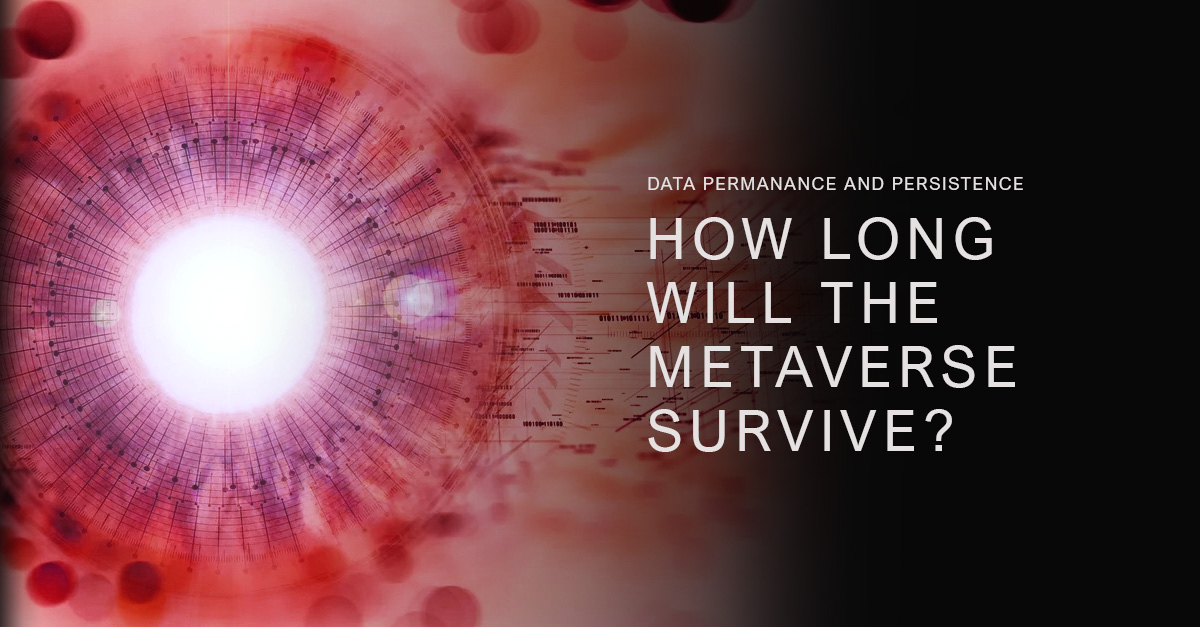As the metaverse builds and expands, individuals and businesses are producing massive amounts of data and content. Around 75 Zettabytes of data in the world was created in 2021. While that sheer amount of volume and size of the information had to be stored in some form of data repository, it’s difficult for anyone to wrap their head around that number. To put data creation in the perspective of video streaming, you would have binged-watched 37.5 trillion hours of HD quality shows or 4.2 million years’ worth of video content. (Assuming 1TB of data = 500 hours of HD video)
Fact is, the amount of data assets will only continue to grow as more people in the world engage online, play games, and work anywhere. As digital creators bring new virtual experiences to life, thriving digital economies will merge with physical ones. This drives the demand for more persistent, durable and more energy-efficient forms of data storage with a high capacity in which metaverse creators and users can store copies of its original assets for as long as possible.
FROM BIG DATA TO LONG-DATA
For the past 20 years, analysts and enterprises have observed 5 big data characteristics of concern: Volume, Velocity, Variety, Veracity, and Value. The data economy is evolving, and the new key challenge of big data now must contend with the ‘vitality’ of data. The vitality of big data concerns itself with the long-term survivability of data – especially against time, tampering, and the environments in which data exists. Think of it this way: Data only has value if there is utility, when it is in motion, and/or it represents an asset. When data resides on storage medium that is not durable or resilient against climate change, it is susceptible to data loss and therefore no continuous value can be derived from it for its economic future. The vitality of data – or the long-term data permanence problem has only just begun. Most of the world’s digital data assets were only created within the last 20 years. Sadly, how much of that rich data already lost is anyone’s guess. With the new creator economy pushing the explosion of digital assets into metaverses and omniverses, long-data will enable the time portals for new generations to come.

- 2D optical storage uses lasers to etch pits into the surface of the media.
- 3D optical storage uses lasers to etch pits, but adds a dimension of depth where the pits are etched on multiple layers.
- 4D optical storage uses an additional dimension using different color lasers to encode data.
- 5D optical storage uses the 3 spatial dimensions, color and polarization of light.
Optical storage technologies
Optical storage technology has been in development since the 1960’s, but it didn’t’ become mainstream until the 1980s when Compact Discs were developed. The technology has evolved over the decades from a form of storage and distribution medium for the entertainment industry to an ultra-durable and high-capacity medium of storing high value enterprise archival data. The researchers from the University of Southampton have been working on a new way to increase data optical storage capacity since 2013. They are developing a fast and energy-efficient laser-writing method for producing permanent high-density nanostructures into silica glass using five dimensions.
Based on their method of energy modulated femtosecond laser pulses, the research group at the University of Southampton aim to reach the potential data capacity of 500 TB on a 12.7 cm glass plate that is 4 mm thick (similar size to optical discs today and 3-4 times the thickness). Because silica glass is a quartz material that is relatively hard with high temperature resistance, the durability of the media could last 13.8 billion years at 160 centigrade. This type of 5D storage technology will eventually solve the eternal data remastering problems of national archives, museums, libraries, government, and digital creators of the metaverse.
You may have seen the articles and videos published in 2018 coined the ‘Superman memory’ crystal. Warner Bros and Microsoft piloted a project called Project Silica to put a permanent digital copy of the original the 1977 Superman movie on a piece of quartz plate – to preserve it forever. It is quite inspiring even though it took a week to write the data, and several days to read the data back.
Professor Peter Kazansky, from the University of Southampton Optical Research Center, says: “It is thrilling to think that we have created the technology to preserve documents and information and store it in space for future generations. This technology can secure the last evidence of our civilization: all we’ve learnt will not be forgotten.”
If you interested in the science and methods behind it, here’s the link of their published research paper by the Optica Publishing Group.
Other funded research projects using optical lasers are also on the horizon. Purdue University innovators have created technology aimed at replacing Morse code with colored “digital characters” to modernize optical storage using plasmonic color generation.
Until the 5D optical technology becomes commercially feasible within the next 20 years, professional BD-R optical discs and optical libraries using 3D optical technology are very relevant for today’s use cases and needs among creators, researchers, archivists, financial institutions, and government. 100-200 GB of capacity is available on a single disc – and 5.5 TBs to 20 TBs of immutable data storage capacity in a single cartridge. How long the metaverse will survive will depend on many factors. Foremost, data assets that doesn’t exist, survive, or cannot be found will be the ultimate determinant of the metaverse and its economy. All the while, it may possibly keep your video binge-watching habits in check.

